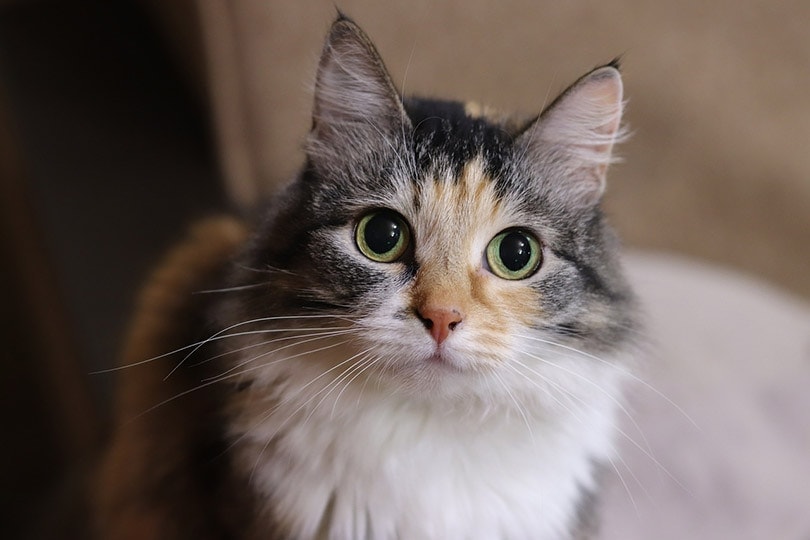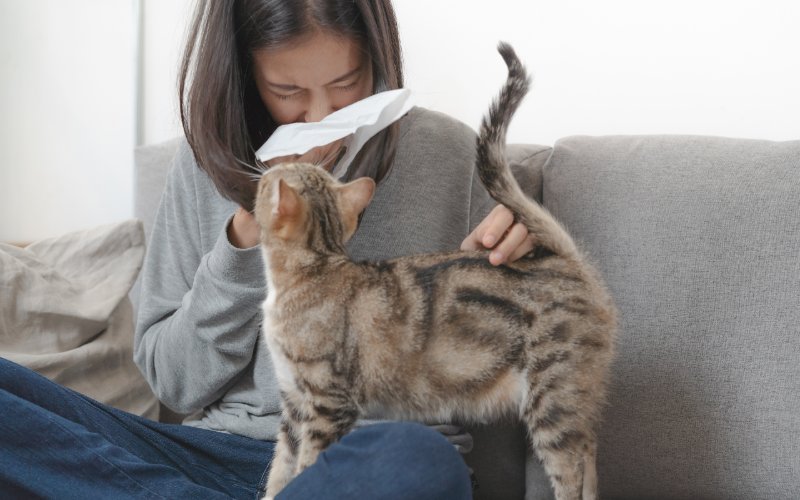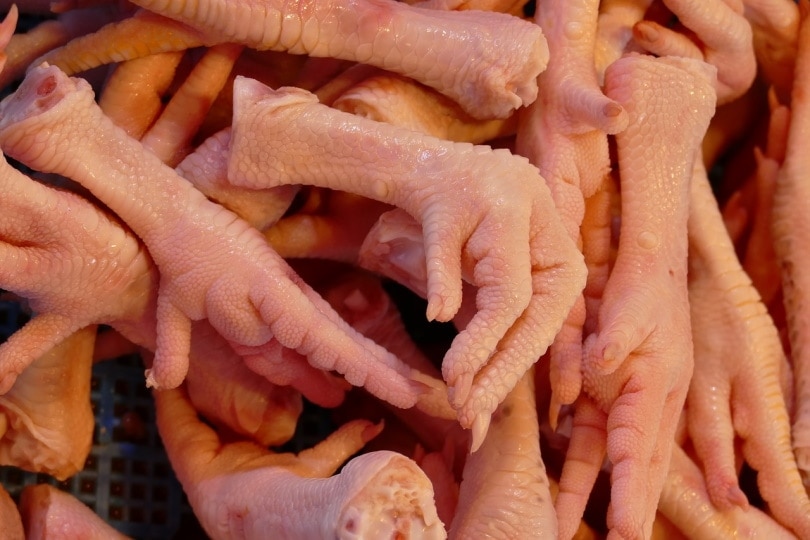17 Typical Cat Sleeping Positions Explained (With Pictures & Infographics)

Updated on
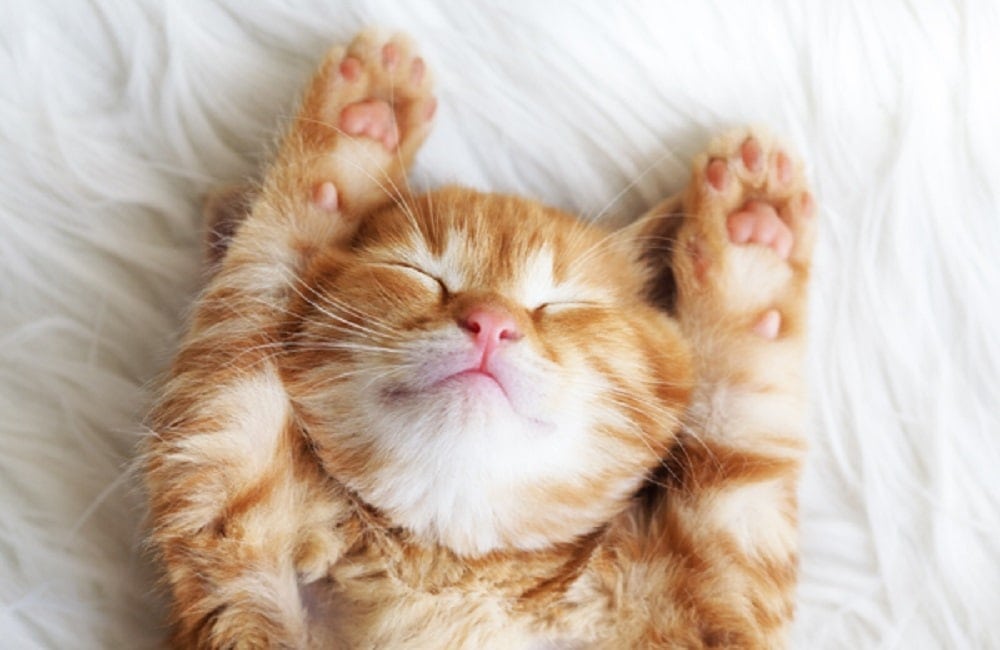
Cats make our homes fun and they are intriguing to watch, especially when they are sleeping. They can sleep for 18 hours a day or more, depending on the breed and age of the cat.
So, what does it mean when a cat curls itself next to you? In this article, we have outlined some common cat sleeping positions and what they mean.
The 17 Typical Cat Sleeping Positions
Trusting Sleeping Positions
Cats are predators and prey in the wild, and they must always be attentive, even when sleeping. The level of safety they feel will influence their sleeping position. Some of the common trusting cat sleeping positions include:
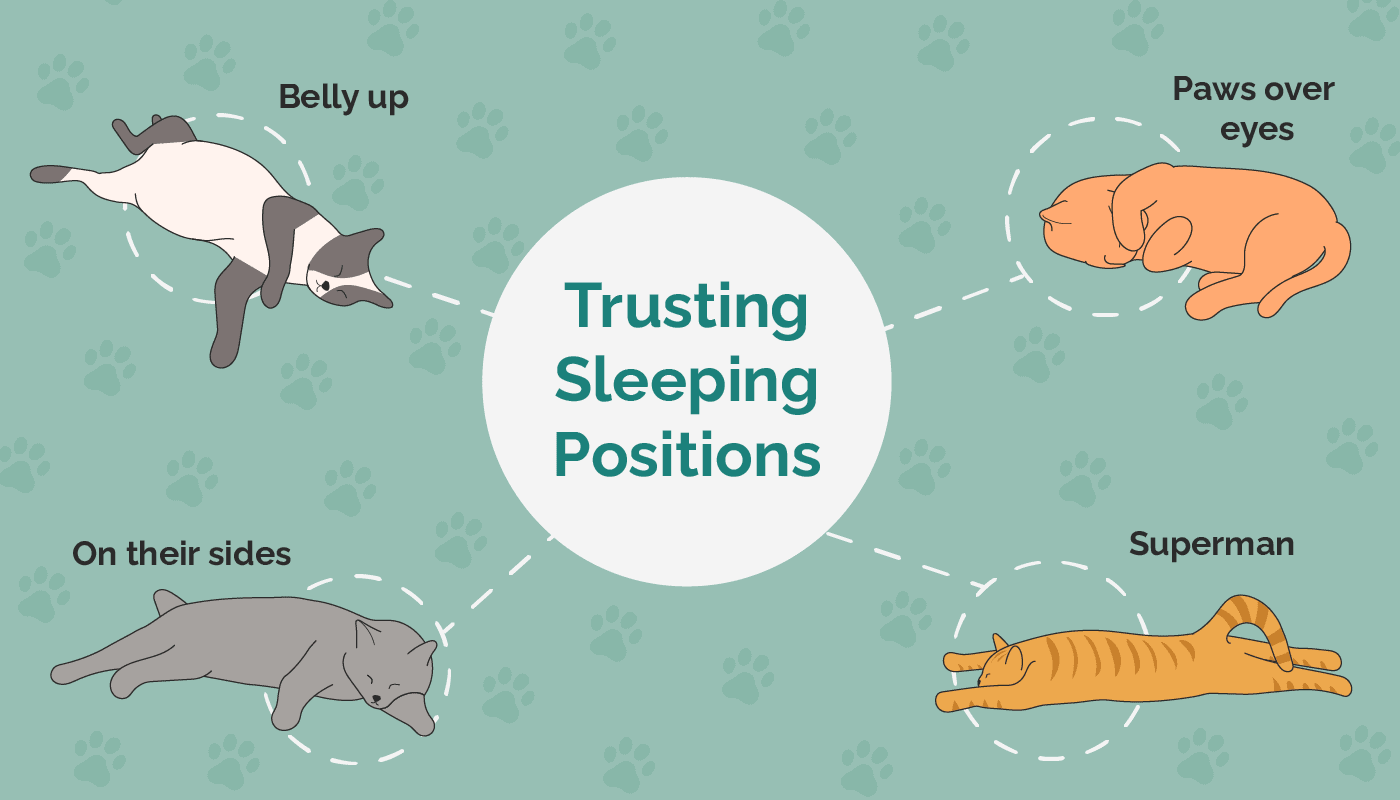
1. Belly up
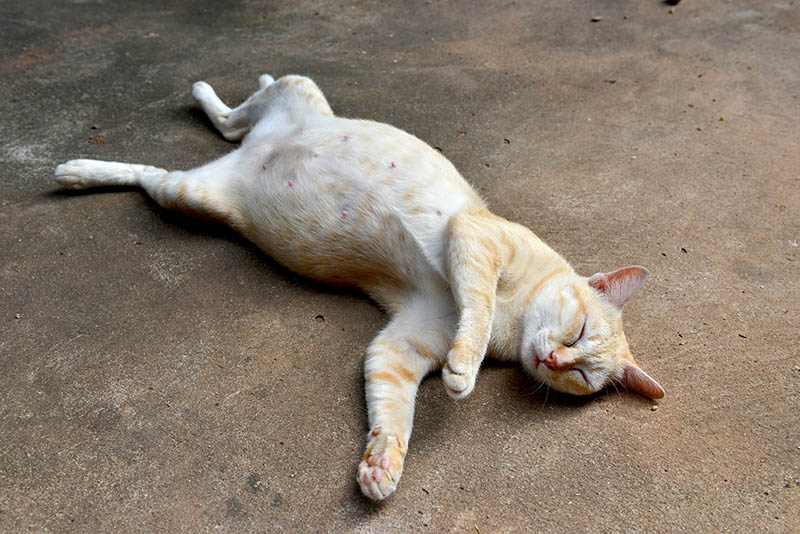
This is arguably one of the cutest sleeping positions since it exposes the cat’s belly and paws. If a cat sleeps in this position, it is a great sign that they are pretty relaxed. The most vulnerable part of the cat is its belly, and sleeping in this position means they trust you not to harm them. Even though your cat trusts you and feels safe, you should avoid rubbing its belly when sleeping in this position. They will still try to defend themselves and may end up swatting, biting, and scratching.
2. Paws over eyes
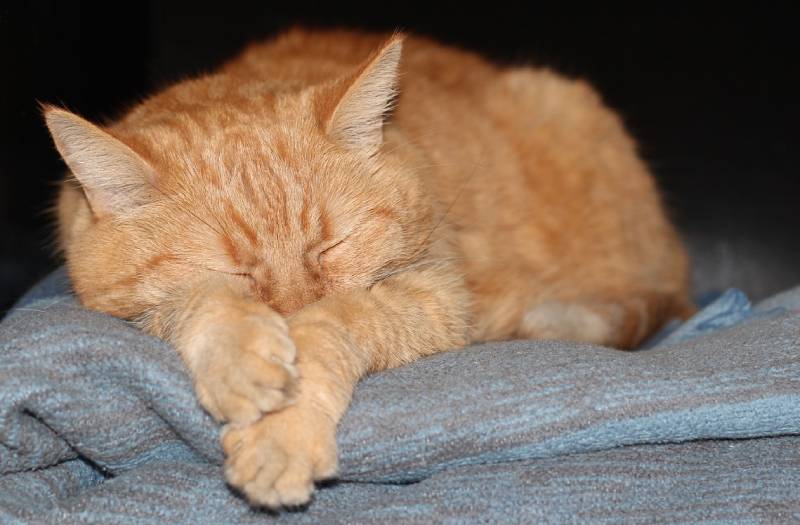
Like their owners, cats sometimes sleep with their paws covering their eyes. This position enables them to insulate their warmth. They can use the paw as a sleeping mask to block out excess light, dust, and pollen. It can also be a signal to their owners that they prefer to be left alone when they’re sleeping. Cats in this position are also ready to spring into action in case they are attacked or sense that they are in danger.
3. On their sides
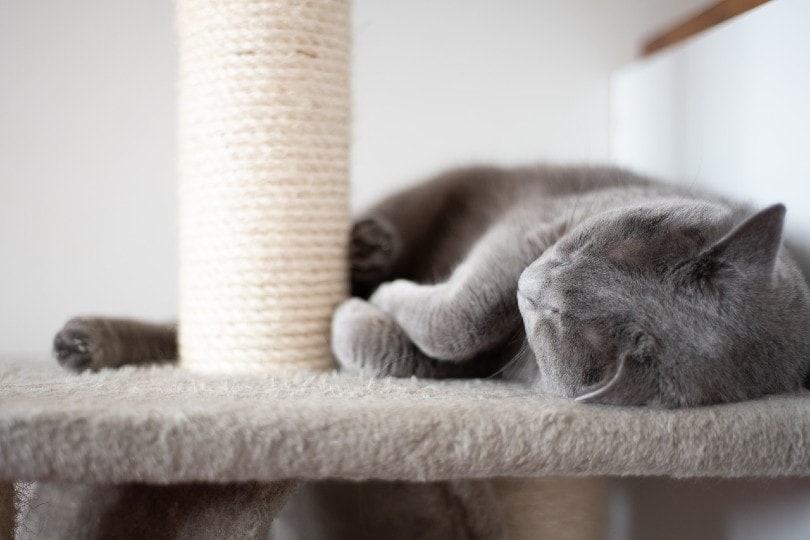
Cats love sleeping on their sides with their legs stretched out. This position enables them to stretch and relax. Similar to the belly-up position, a cat sleeping in this position trusts you since their bellies are exposed. However, unlike the belly-up situation, a cat sleeping on their side makes it easy for them to spring to attention and run if needed.
4. Superman pose
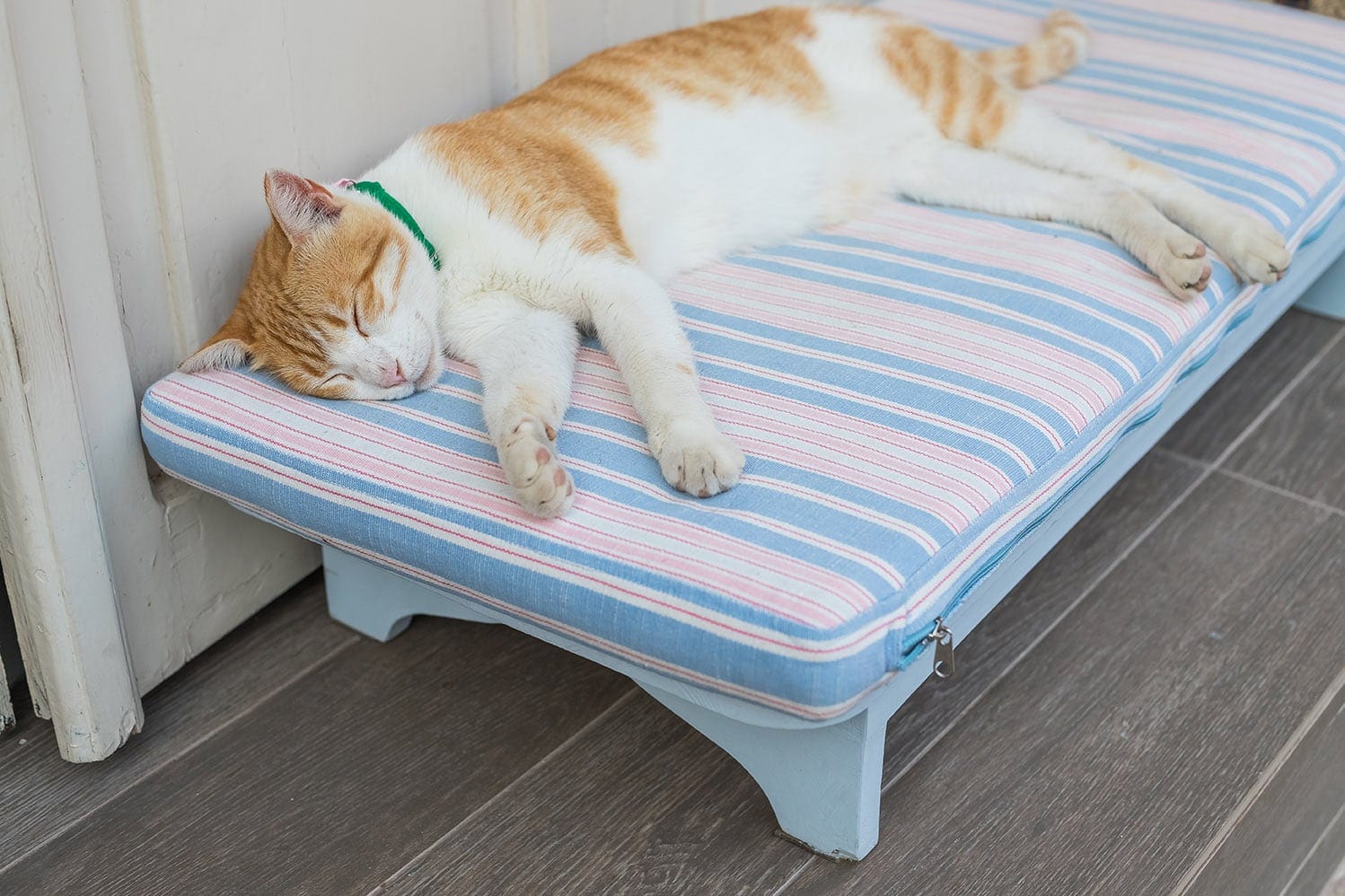
In this position, the cat lies on their belly with their front paws stretched forward and back legs stretched behind them like they are in flight. Cats in this position are relaxed, but all four paws are extended and thus ready for action. It also enables them to protect their bellies. Depending on the weather, they might sleep on a warm surface or the floor in this position.
Ready for Action Sleeping Positions
Domestic cats often sleep in positions that allow them to spring into action in case of danger. Just like their wild counterparts, cats are natural-born hunters. Cats are more likely to sleep in this position if they feel insecure, especially in a new place or around strangers.
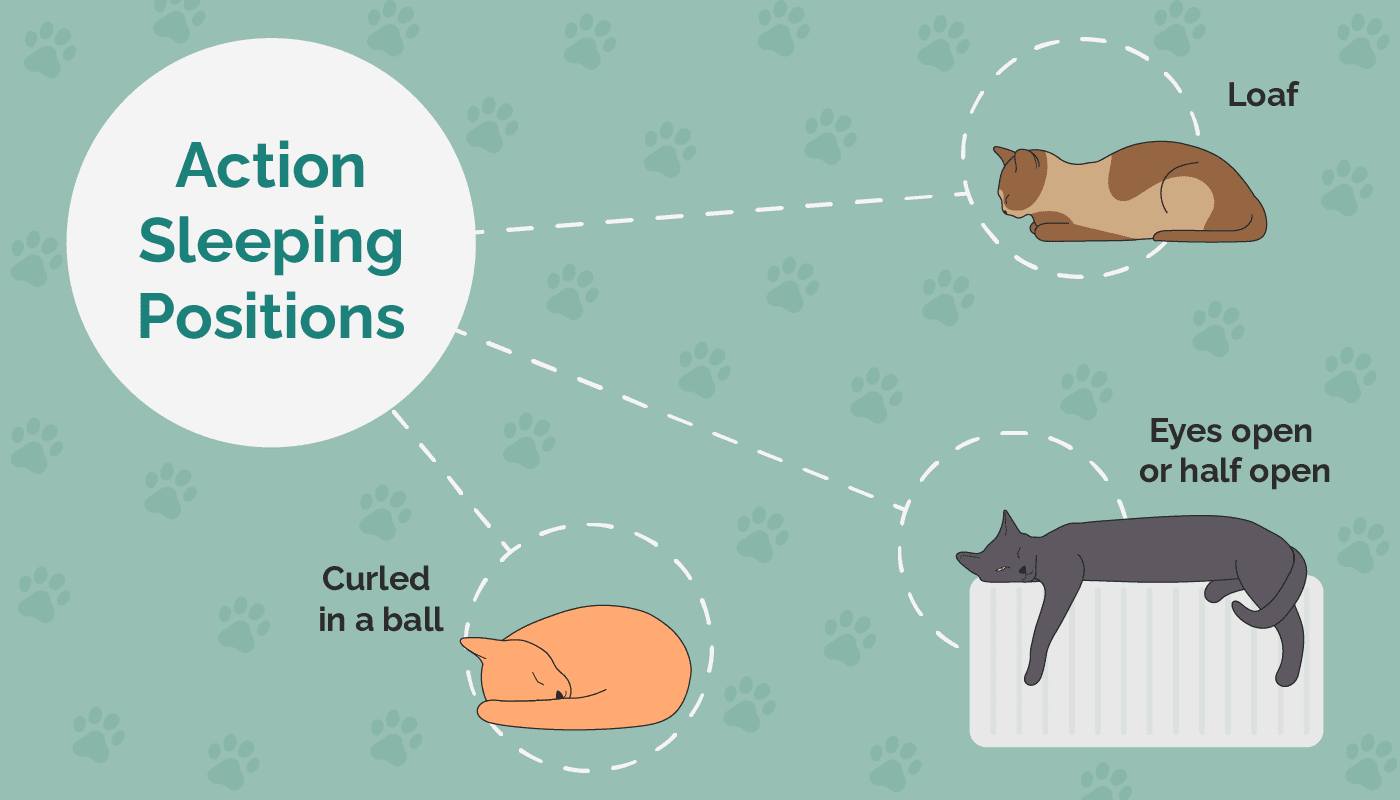
5. Loaf position
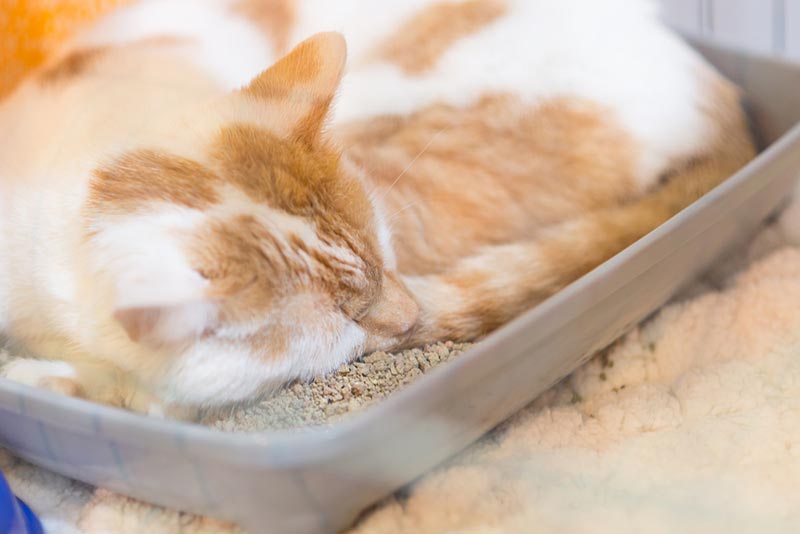
Cats often sleep in a position that makes them look like a bread loaf. They do so by tucking their paws under their body and keeping their heads up. Cats sleeping in this position are relaxed and ready to spring into action in case of danger since their front paws are ready. This position also helps the cat reserve body heat and protect vital organs.
6. Curled in a ball
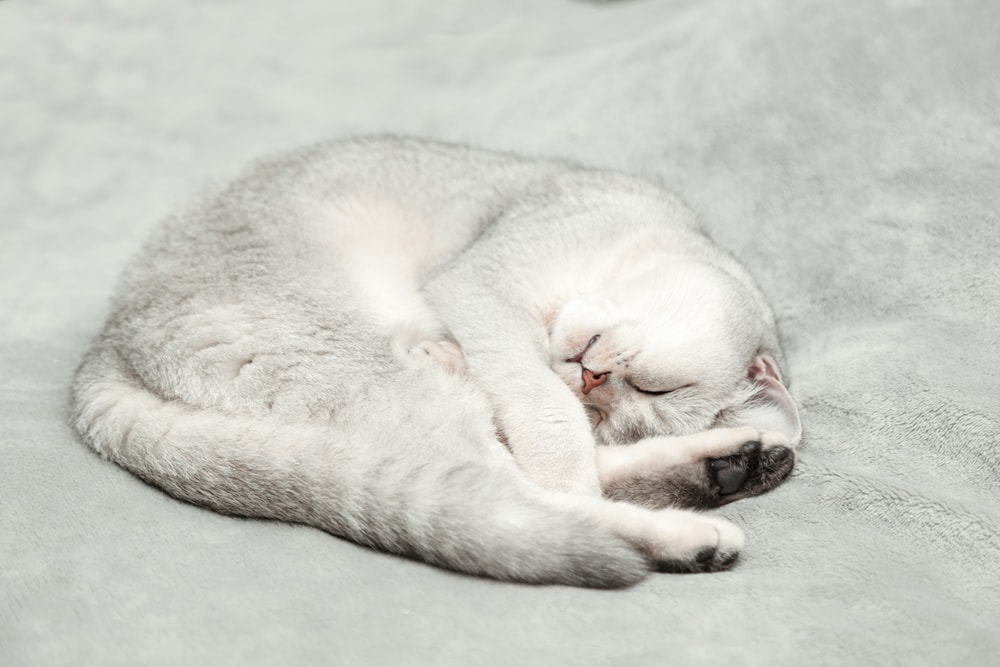
Cats often sleep curled in a ball, nose to tail, mainly to retain their body heat and help them stay warm. This position also helps them protect their vital organs by surrounding them with muscle and bone.
7. Eyes open or half open
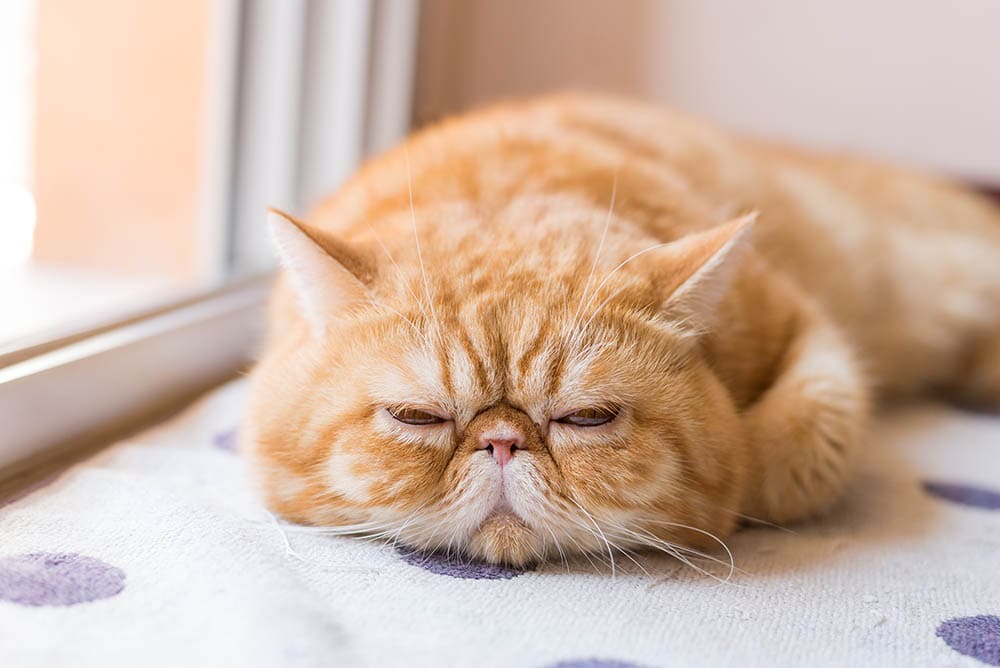
Sometimes cats sleep with their eyes open or half open which might be a bit concerning for their owners. They have a translucent third eyelid between other eyelids that can be seen when the cat sleeps. It protects irritants such as dust and pollen from getting into their eyes.
Although sleeping with their eyes half open is normal, you should ensure there is no medical condition by taking your cat to the vet.
- Squinting
- Discharge from the eyes
- Seeing the third eyelid when the cat is awake
- Swelling
Concerning Sleeping Positions
Your cat may adopt certain sleeping positions when they are sick. If you suspect your cat is unwell, contact a professional vet for further investigation.

8. In a litter box
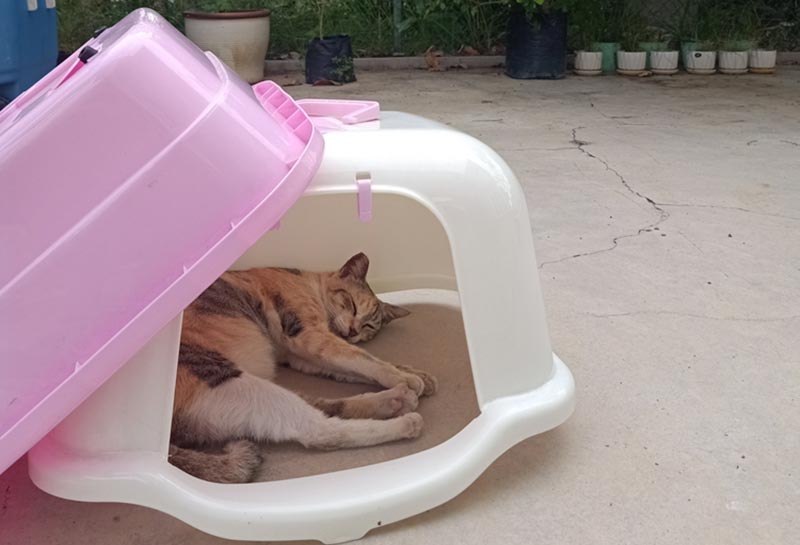
One of the strangest places your cat can sleep is in the litter box. If this happens, getting your cat checked out by a vet is important since they might have an underlying medical condition. Your cat might be suffering from a urinary issue like a UTI or a bladder blockage.
Older cats might also sleep there to easily access their litter box, especially when they have arthritis. If they have dementia or cognitive dysfunction, they can mistake the litter box for their resting place. Your cat might also be looking for a safe hiding spot.
9. Face down
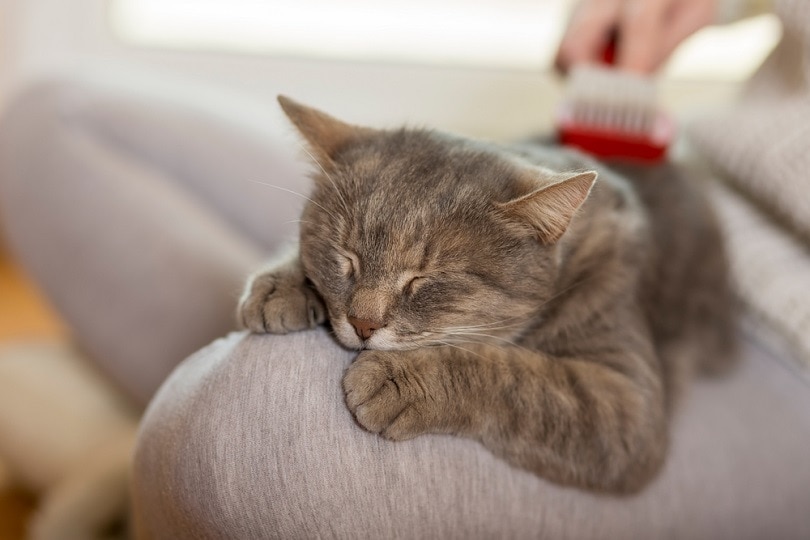
A cat sleeping face down may be doing so to avoid bright light in its eyes, keep its nose warm, and communicate wanting to be left alone. Most cats also sleep in this position when they want to be left alone. However, this position can indicate that your cat is sick.
10. Near the water bowl
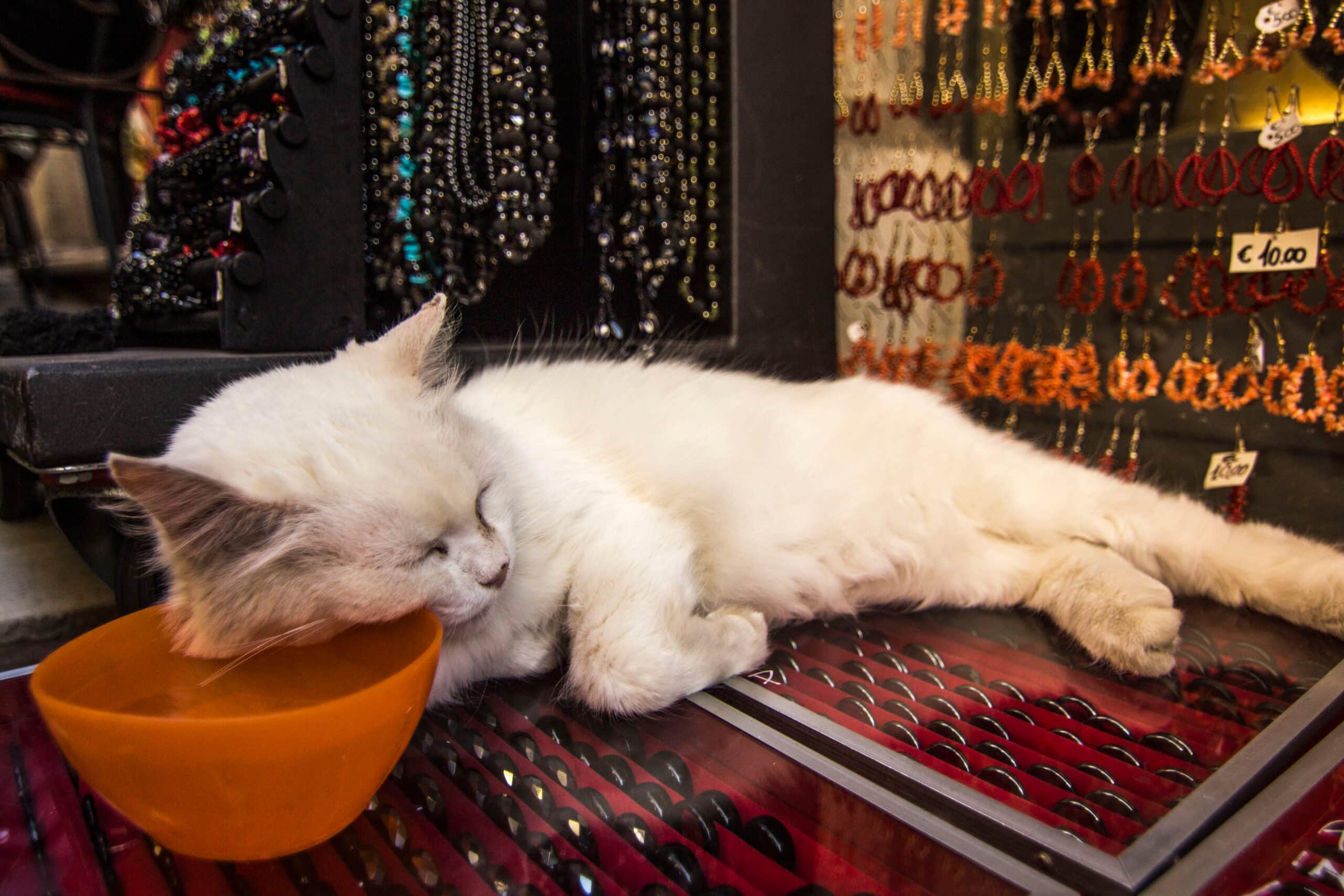
There are several reasons why your cat may be sleeping by the water bowl. It is a comfy spot since it is near their source of water. It could also be a sign that your cat is dehydrated, which can be a sign they are ill. You can check by pinching the skin between their shoulders. If the skin doesn’t bounce back quickly but remains in a pinched position, that’s a sign that it’s dehydrated.
Affectionate Cat Sleeping Positions
Once cats become bonded with their owners, they tend to trust more and get more comfortable. Some sleeping positions that show your cat is affectionate include:

11. On your chest
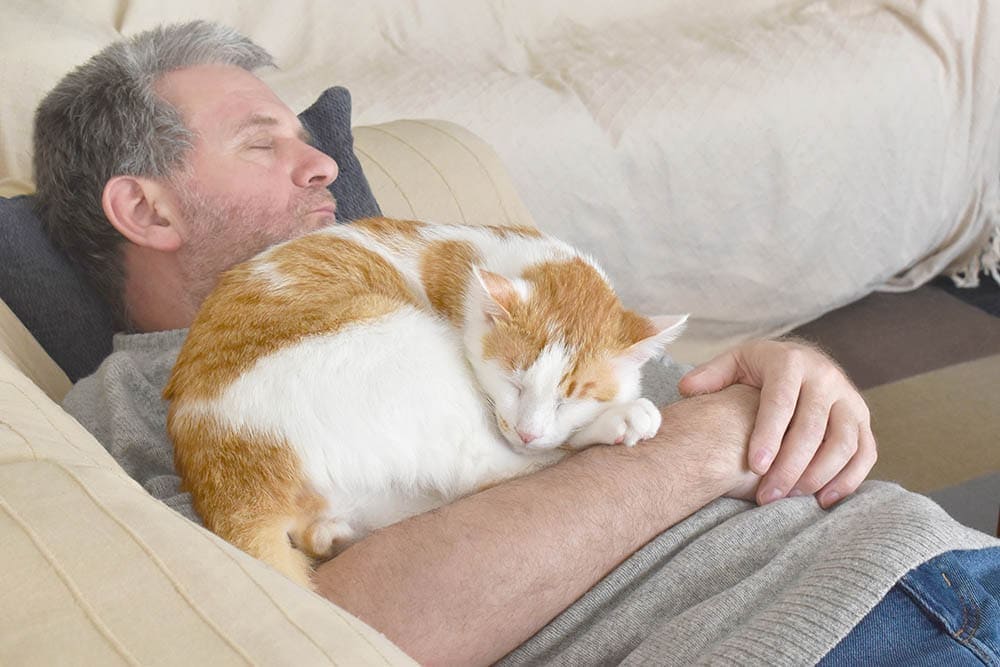
Your cat sleeping on your chest is a sign that he is bonded to you. They might lie on your chest to be close to you and seek warmth, especially on a cold day. Also, in the same way, that a parent’s heartbeat soothes the baby, a cat owner’s heartbeat soothes it.
12. On your head
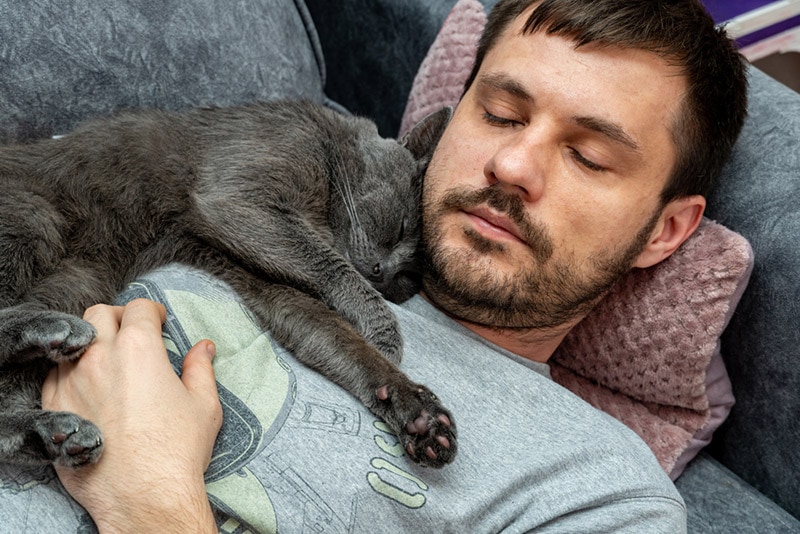
Sleeping on or near your head could be a sign of affection, or they could simply be doing it to find a soft spot to nap. Your head often lies on a soft surface when you sleep, and your cat might want to share the space. Another reason is that your head moves a lot less than other parts of your body when you sleep.
Many cats also adapt to your sleep schedule and may want to be close to you while sleeping. A cat can also stretch easily and pat you to wake you up for food and attention, which is why some clingy felines love this position.
13. Between your legs
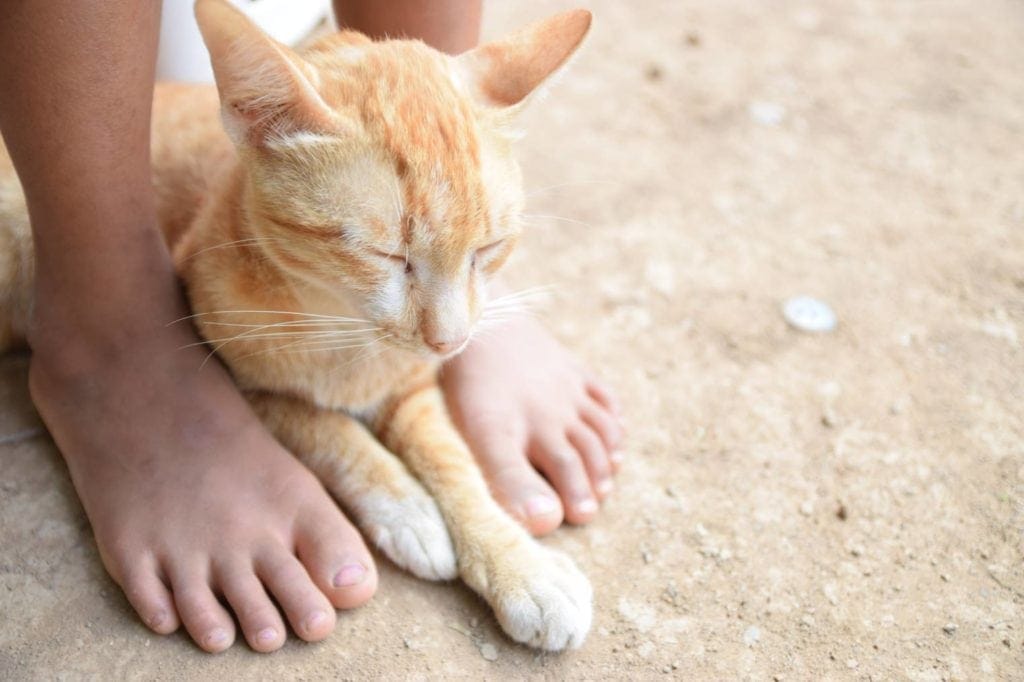
Cats love sleeping between their owner’s legs to keep warm and show that they feel safe and comfortable in their presence. The security your legs provide allows the cat to let their guard down and get into a deep sleep. Some cats may also want to mark you as their territory or have a clear escape route. When your cat is in this position, ensure you are careful not to step on its tail or another body part.
14. With a dog or other cats
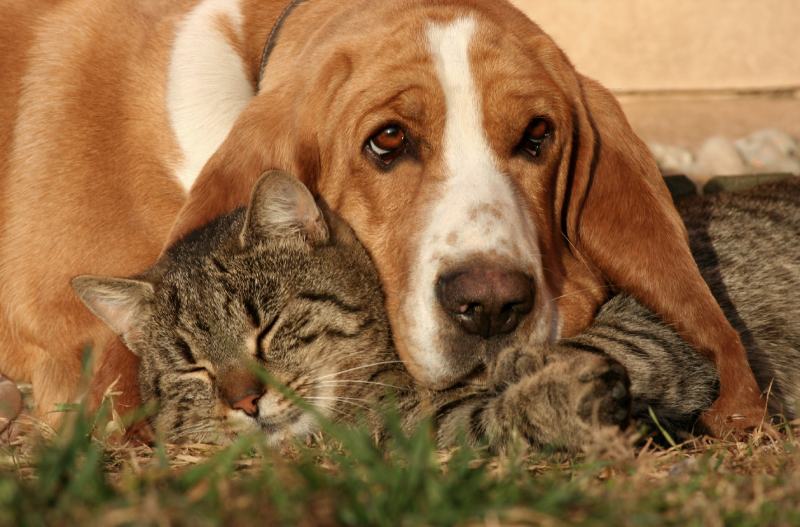
Contrary to popular belief, many cats and dogs in the same home get along well. If the introduction is patient and gradual, your cat and dog may become best friends. Your cat will likely sleep cuddled next to your dog or on top of them once bonded.
Cats and kittens will often bundle together to stay warm or for companionship. This is often accompanied by kneading and purring. Cats only sleep together if they are bonded and enjoy each other’s company. However, cats that are not bonded and merely tolerate each other may sleep close to each other to show that they are not in conflict.
Hidden Cat Sleeping Positions
Many cats enjoy sleeping in a warm and cozy space. Cats often nap in hidden spaces when they are feeling scared or anxious. Pregnant cats are more likely to sleep in hidden places often, especially when they are ready to give birth.

15. In a box
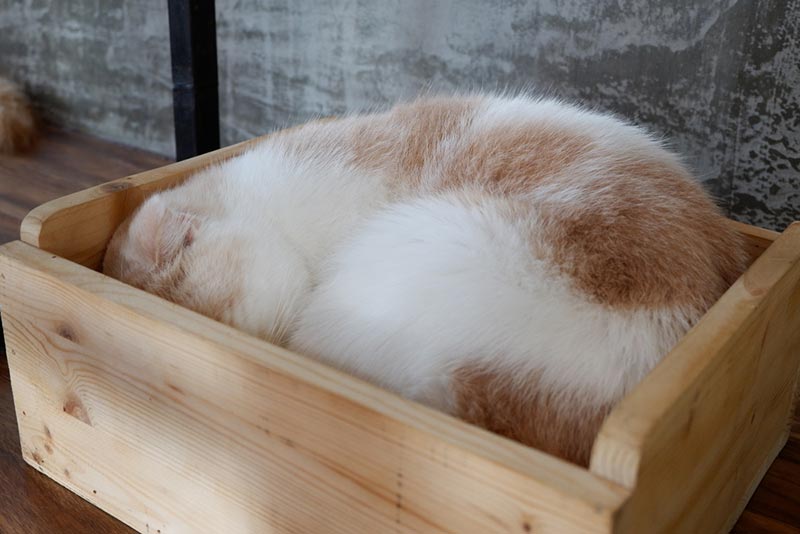
Cats love playing and sleeping in boxes since they love enclosed spaces. Sleeping in a box helps them feel safe and secure against external dangers. Cats feel relaxed when sleeping in a box and to keep themselves warm. They also love squeezing in a too-tight box for added security.
16. Under the blankets
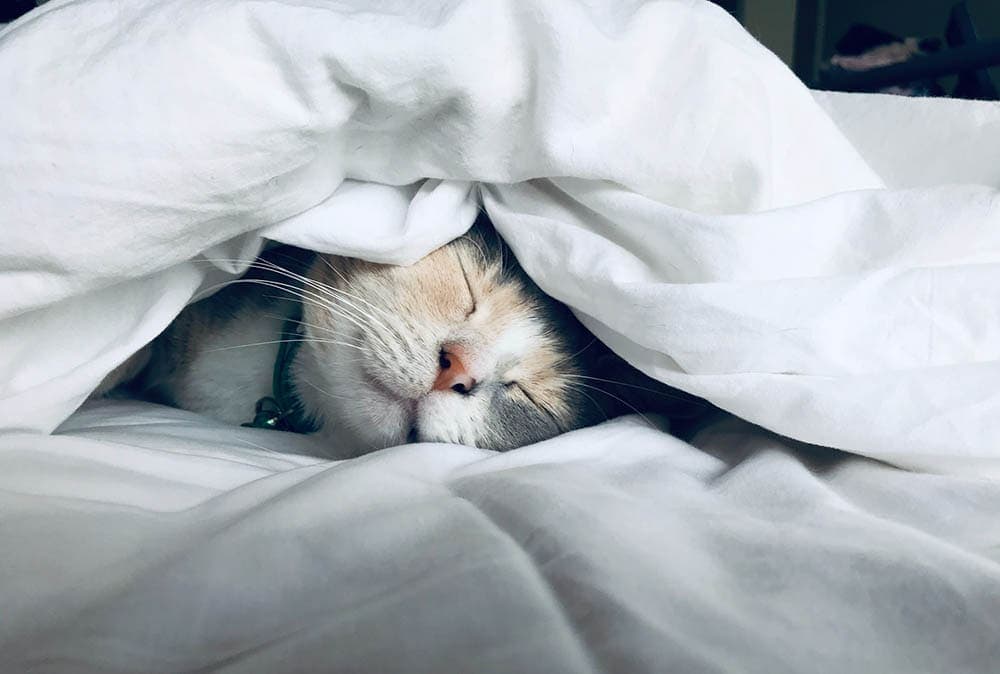
Cats typically sleep under the blanket to feel warm and snuggly and enjoy their owner’s scent. They usually do this when the temperatures are low, and their owner is away. They may also enjoy the quietness of burying themselves under the covers. This position is comfortable for cats and makes them feel safe. If your pet often sleeps in this position, ensure you know where your cat is sleeping to avoid lying on it. Also, check on them often to ensure they are getting enough air.
17. Under the bed
Cats enjoy sleeping under the bed for added safety and privacy. It also tends to be warm and quiet. Most cats do this when they feel anxious and need to hide somewhere secure, especially in a house with kids. Since they do this to be alone, ensure you don’t disturb them. Also, watch out for other signs of illness since cats hide away when they are sick or in pain.
With cats sleeping an average of 15 hours a day, you'll want to supply your companion with a bed that offers maximum comfort. Our Hepper Nest Bed was designed to support the various needs of cats of all ages, sizes and ailments, making it an excellent choice for any feline. It's high sides and wide top edge embrace kitties in whichever position they prefer to sleep in. A removable, machine washable liner ensures you can keep their bed fresh without compromising the structure of the durable foam shell meaning this modern bed will last your cat many years and cozy naps. Learn more about the Nest here.
Final Thoughts
Some cats sleep more often than others. If you are looking for a cat that can spend most of its time watching movies and napping with you, you should consider getting a relaxed cat. The American Shorthair, Persian, and Maine Coon are excellent napping and cuddling companions. They prefer to sleep on the couch next to you and only need a small amount of playtime.
Featured Image Credit By: Alena Ozerova, Shutterstock



